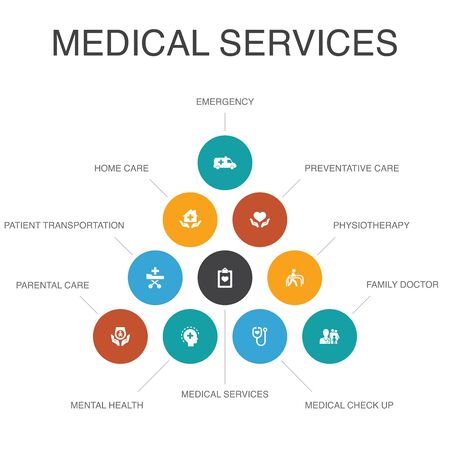Understanding Cosmetic Procedures in the UK
Cosmetic procedures have become a staple of modern British self-care, with clinics across the UK offering everything from subtle tweakments to transformative surgeries. Whether you’re considering anti-wrinkle injections, dermal fillers, laser treatments, or more invasive surgical options like rhinoplasty or breast augmentation, British clinics provide an extensive menu to suit every desire and budget. The allure of these treatments lies not only in their promise of aesthetic enhancement but also in the accessibility and professionalism found throughout the UK’s cosmetic industry.
However, navigating the world of cosmetic enhancements requires more than just choosing a treatment; understanding the regulatory landscape is equally crucial. In the UK, non-surgical procedures are regulated differently from surgical ones. While surgical procedures must be performed by GMC-registered surgeons in CQC-regulated facilities, non-surgical treatments (like Botox and fillers) can legally be administered by practitioners without medical qualifications—although reputable clinics always ensure their staff are trained and insured. Recent years have seen growing calls for stricter regulation to protect patients, making it vital for anyone considering a procedure to research both their chosen treatment and practitioner thoroughly.
This guide aims to demystify what’s on offer in British cosmetic clinics and provide clarity around safety and regulations, empowering you to make well-informed decisions for your personal beauty journey.
2. Common Risks Associated with Cosmetic Treatments
When considering cosmetic procedures in the UK, it’s crucial to understand not only the potential benefits but also the common risks that may arise. While many treatments are performed safely across reputable clinics, some adverse effects occur more frequently than others. Here’s a closer look at the typical risks associated with cosmetic procedures in British clinics, informed by both clinical data and real patient experiences.
Scarring: A Frequent Concern
Scarring is one of the most commonly reported side effects following surgical and even some non-surgical cosmetic interventions. The likelihood of visible scarring can depend on your skin type, the skill of your practitioner, and how closely you follow aftercare instructions. In the UK, practitioners often use advanced techniques to minimise scars, yet hypertrophic or keloid scars still occur in a minority of cases—especially among those with a personal or family history of problematic scarring.
Infection Risks
Despite rigorous hygiene standards in UK clinics, infection remains a notable risk—particularly after invasive treatments such as dermal fillers, facelifts, or liposuction. Symptoms may include redness, swelling, warmth, and pain at the site of treatment. Timely intervention is key; reputable clinics will always provide clear guidance on recognising early signs and when to seek help.
Adverse Reactions: Allergies and Sensitivities
Whether you’re considering injectable treatments like Botox or dermal fillers, or topical procedures such as chemical peels and laser therapy, there’s always a possibility of an adverse reaction. Allergic responses may manifest as rashes, itching, or more severe symptoms like swelling of the face or throat (anaphylaxis). UK clinics routinely carry out patch tests where appropriate and take detailed medical histories to reduce this risk—but no procedure is entirely without danger.
Table: Common Risks Encountered in UK Cosmetic Clinics
| Treatment Type | Common Risk | How Often? | Typical Management |
|---|---|---|---|
| Surgical (e.g., breast augmentation) | Scarring | Up to 10% experience visible scars | Silicone gels, scar massage, revision surgery if needed |
| Injectables (e.g., fillers/Botox) | Bruising/Swelling | Around 15-25% | Cooled compresses, anti-inflammatory medication |
| Lip fillers/Facial injectables | Lumpiness/Nodules | Approx. 1-5% | Massage, hyaluronidase (for hyaluronic acid fillers) |
| Laser & Chemical Peels | Pigmentation changes | Less than 5% | Sun protection, topical creams |
| Surgical/Non-surgical treatments | Infection | <1% (in reputable clinics) | Antibiotics, wound care protocols |
The Importance of Informed Consent and Personal Awareness
No matter how skilled your practitioner or how reputable the clinic, every cosmetic procedure comes with inherent risks. In the UK context—where regulation is relatively robust compared to some countries—clinics are required to discuss these possibilities during your consultation. As someone who has experienced both subtle enhancements and more involved treatments first-hand, I cannot stress enough the importance of asking questions about every potential risk before you commit.
![]()
3. Possible Side Effects: What to Expect
When considering cosmetic procedures in the UK, it’s essential to approach the experience with both excitement and caution. Each treatment—whether you’re exploring anti-wrinkle injections, dermal fillers, chemical peels, or laser therapies—carries its own spectrum of potential side effects. Understanding what might arise, both immediately after your appointment and in the weeks or even months following, helps you make an informed decision and prepares you for the journey ahead.
Short-Term Side Effects
Most cosmetic treatments performed in reputable UK clinics are designed to minimise discomfort and downtime. However, common short-term side effects can include:
- Redness and Swelling: Particularly after injectables or skin resurfacing, mild redness and swelling at the treatment site are expected. These usually subside within a few hours to a couple of days.
- Bruising: Injections may occasionally cause bruising, especially around sensitive areas like the lips or under the eyes. Using arnica gel and avoiding blood-thinning medications beforehand may help reduce risk.
- Tenderness or Sensitivity: It’s normal to experience some tenderness or mild discomfort post-procedure, which typically resolves quickly.
- Peeling or Flaking: Chemical peels and certain laser treatments can lead to temporary skin shedding as your complexion renews itself.
Localised Reactions
Sometimes, patients notice small lumps or bumps at the injection site (especially with fillers), mild itching, or a sensation of tightness. These reactions tend to fade as your skin settles and heals.
Long-Term Side Effects
While most side effects are short-lived, there are rare but important long-term considerations:
- Pigmentation Changes: Some individuals—particularly those with darker skin tones—may experience hyperpigmentation (darkening) or hypopigmentation (lightening) after laser treatments or peels.
- Scarring: Though uncommon when procedures are performed by experienced practitioners, improper technique or aftercare can increase the risk of scars forming.
- Nodules or Granulomas: Occasionally, delayed lumps may develop beneath the skin following filler injections; these may require further medical attention.
Permanence and Migration
Certain fillers can rarely migrate from their original placement, leading to asymmetry or a less-than-desired result. Choosing a qualified practitioner is key in minimising such outcomes.
Allergic Reactions
Though rare, allergic responses to substances used in cosmetic procedures can occur. Always disclose your full medical history—including any allergies—to your clinician during the consultation stage to ensure your safety.
The British approach emphasises transparency and patient wellbeing; reputable UK clinics will discuss all possible risks with you before proceeding. Ultimately, being aware of both the immediate and longer-lasting side effects allows you to enjoy your enhanced appearance with confidence and peace of mind.
4. Factors Influencing Risk Levels
When considering cosmetic procedures in UK clinics, it’s essential to appreciate that risk levels are rarely one-size-fits-all. The likelihood and severity of complications can vary dramatically from person to person, depending on a tapestry of individual factors. In this section, I’ll share insights gleaned from both personal experiences and trusted industry sources, weaving in the nuances that make each journey unique.
Lifestyle Considerations
Your everyday choices—smoking habits, alcohol consumption, diet, and exercise—can significantly influence your body’s ability to heal and respond to cosmetic interventions. For example, as someone who enjoys long walks through Hyde Park but also indulges in the occasional prosecco brunch, I’ve learned first-hand how lifestyle moderation can tip the scales towards safer recovery and fewer side effects.
| Lifestyle Factor | Potential Impact on Risks |
|---|---|
| Smoking | Higher risk of poor wound healing, infections, and scarring |
| Alcohol Consumption | Increased bruising and bleeding during/after procedures |
| Diet & Hydration | Better nutrition supports optimal healing; dehydration may delay recovery |
| Physical Activity | Regular moderate exercise boosts circulation and healing capacity |
Health History: The Unseen Layers
Your medical background is a crucial piece of the puzzle. Conditions like diabetes, autoimmune disorders, or a history of allergic reactions can heighten risks or rule out certain treatments altogether. It’s not just about ticking boxes on a pre-procedure form—openly sharing your health history with your practitioner ensures they tailor their approach for your safety and wellbeing.
| Health Condition | Possible Complications |
|---|---|
| Diabetes | Slower healing and higher infection risk |
| Allergies (medications/products) | Potential for severe reactions or anaphylaxis |
| Autoimmune Disorders | Unpredictable immune response to treatments |
The Practitioner’s Expertise: A Decisive Factor
No matter how advanced the procedure or how reputable the clinic, the expertise of your practitioner remains paramount. In the UK, where regulatory standards are robust but not infallible, choosing an experienced, GMC- or NMC-registered professional can mean the difference between a seamless enhancement and an unfortunate complication.
| Practitioner Attribute | Influence on Safety |
|---|---|
| Level of Training/Certification | Assures adherence to best practices; reduces errors |
| Years of Experience | Greater ability to anticipate and manage complications |
A Holistic View Is Key
Navigating cosmetic procedures is not just about picking a popular treatment—it’s about understanding yourself, your health story, and trusting your chosen practitioner’s artistry and judgement. Taking these factors into account doesn’t guarantee perfection, but it does pave the way for a safer, more beautiful outcome that feels uniquely yours.
5. Choosing a Safe Clinic and Registered Practitioner
When it comes to cosmetic procedures in the UK, selecting a reputable clinic and a registered practitioner is absolutely vital for both your safety and your results. With so many options available, it’s easy to be dazzled by glossy websites or tempting offers, but taking the time to verify credentials can make all the difference between a positive experience and unnecessary risk.
Verifying Registration and Qualifications
First things first: ensure that the clinic and practitioner are properly registered with the relevant UK regulatory bodies. For doctors, check their registration with the General Medical Council (GMC); for nurses, look up their status with the Nursing and Midwifery Council (NMC). Dentists should be listed with the General Dental Council (GDC). These databases are straightforward to search online using the practitioner’s name or registration number, giving you peace of mind that they meet British standards.
British Standards and Accreditation
Beyond individual qualifications, it’s important to consider whether the clinic itself is accredited by respected organisations such as the Care Quality Commission (CQC). The CQC inspects clinics across England to ensure they adhere to strict safety protocols, hygiene standards, and ethical practices. Look for the CQC logo or ask staff directly about their most recent inspection rating—any reputable establishment will be transparent about this information.
Spotting Red Flags
Trust your instincts as much as official registers. Be wary of clinics that offer treatments at unusually low prices, push for quick decisions, or avoid answering questions about complications or aftercare. Genuine practitioners will always take time to explain procedures, discuss potential risks openly, and encourage informed consent. Don’t hesitate to walk away if you feel pressured or uncomfortable at any stage.
Personal Experience: The Value of Due Diligence
From my own journey navigating aesthetic clinics in the UK, I found that taking these extra steps not only reassured me but made the entire process more enjoyable. Engaging with professionals who value British standards adds an extra layer of trust—you can truly relax knowing you’re in capable hands. Ultimately, choosing wisely isn’t just about avoiding risks; it’s about ensuring your cosmetic transformation is as safe and beautiful as you envisioned.
6. Aftercare and Managing Complications
Best Aftercare Practices in the UK
Taking care of yourself after a cosmetic procedure is not just recommended—it’s essential for optimal results and your peace of mind. UK clinics typically provide detailed aftercare instructions tailored to the specific treatment you’ve had, but it’s always wise to follow some universal practices. Firstly, avoid touching or rubbing treated areas, particularly if you’ve undergone injectables or skin resurfacing. Use gentle, fragrance-free cleansers and steer clear of active skincare ingredients until your practitioner gives the green light. Sun protection is non-negotiable; British weather may be unpredictable, but UV rays can still affect healing skin, so SPF should become your new best friend.
Monitoring Your Recovery
Your body’s response to treatment can vary, and it’s crucial to keep an eye on any changes. Swelling, bruising, and redness are common short-term effects and usually subside within days. However, if symptoms persist or worsen, don’t hesitate to contact your clinic. Most reputable UK clinics offer follow-up appointments as part of their patient care ethos—use these opportunities to discuss any concerns and ensure your recovery is on track.
What To Do If Complications Arise
Recognising Warning Signs
If you notice unusual pain, excessive swelling, persistent redness, pus, or high fever, these could indicate an infection or other complication. Similarly, if the results appear uneven or not as expected after a reasonable healing period, it’s important to address this promptly.
Steps to Take
- Contact your clinic immediately—most UK practitioners have protocols in place for managing complications.
- If you cannot reach your practitioner and symptoms are severe (such as difficulty breathing or vision changes), seek urgent medical help via NHS 111 or A&E.
- Keep a record of your symptoms with photos; this helps both your practitioner and any additional medical professionals who may become involved.
Your Rights as a Patient in the UK
The UK places a strong emphasis on patient safety and satisfaction. If you feel your concerns aren’t being addressed by your clinic, you can escalate matters by contacting regulatory bodies such as the Care Quality Commission (CQC) or seeking advice from organisations like Save Face. Remember: feeling empowered to speak up is part of the journey towards the aesthetic confidence you deserve.


